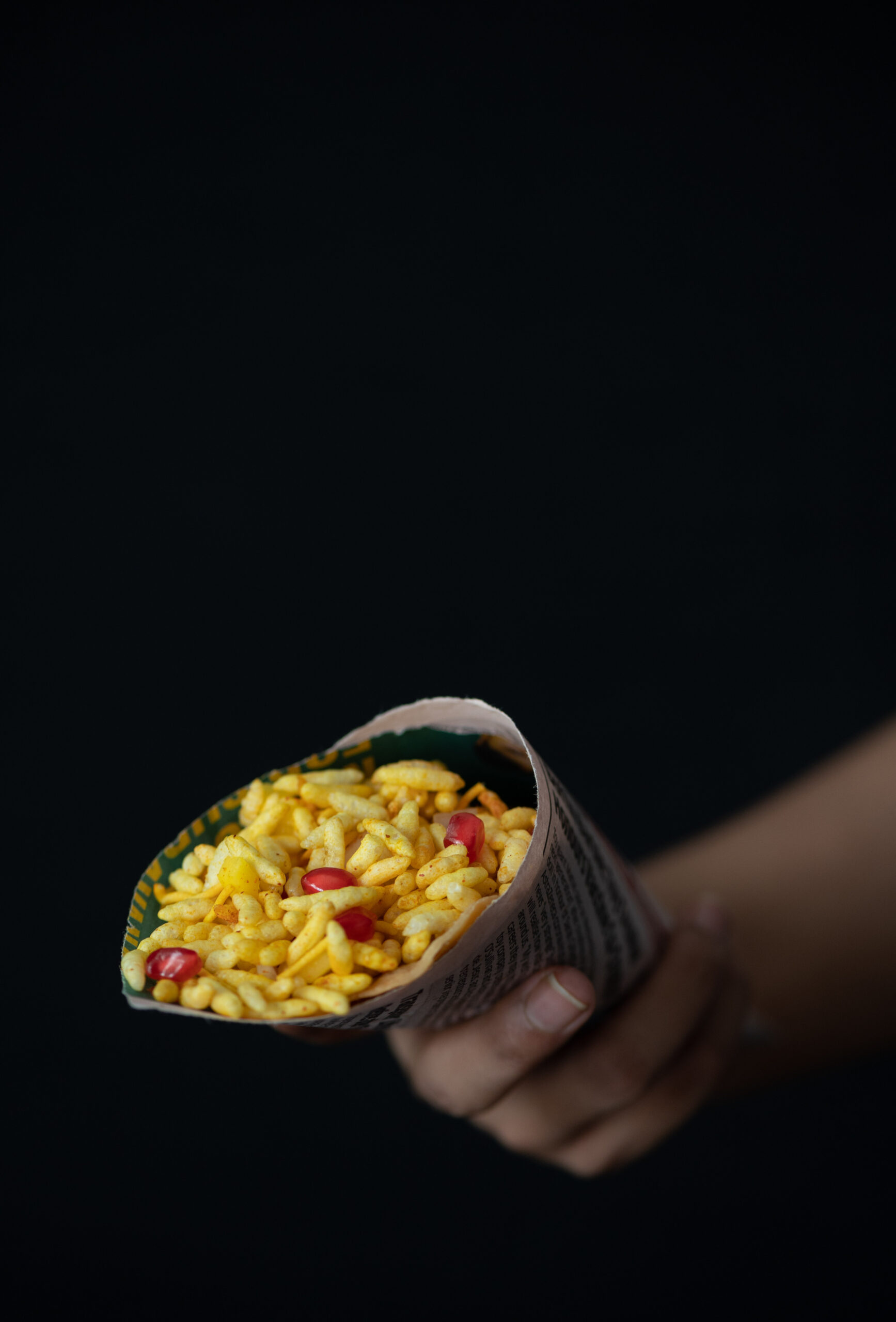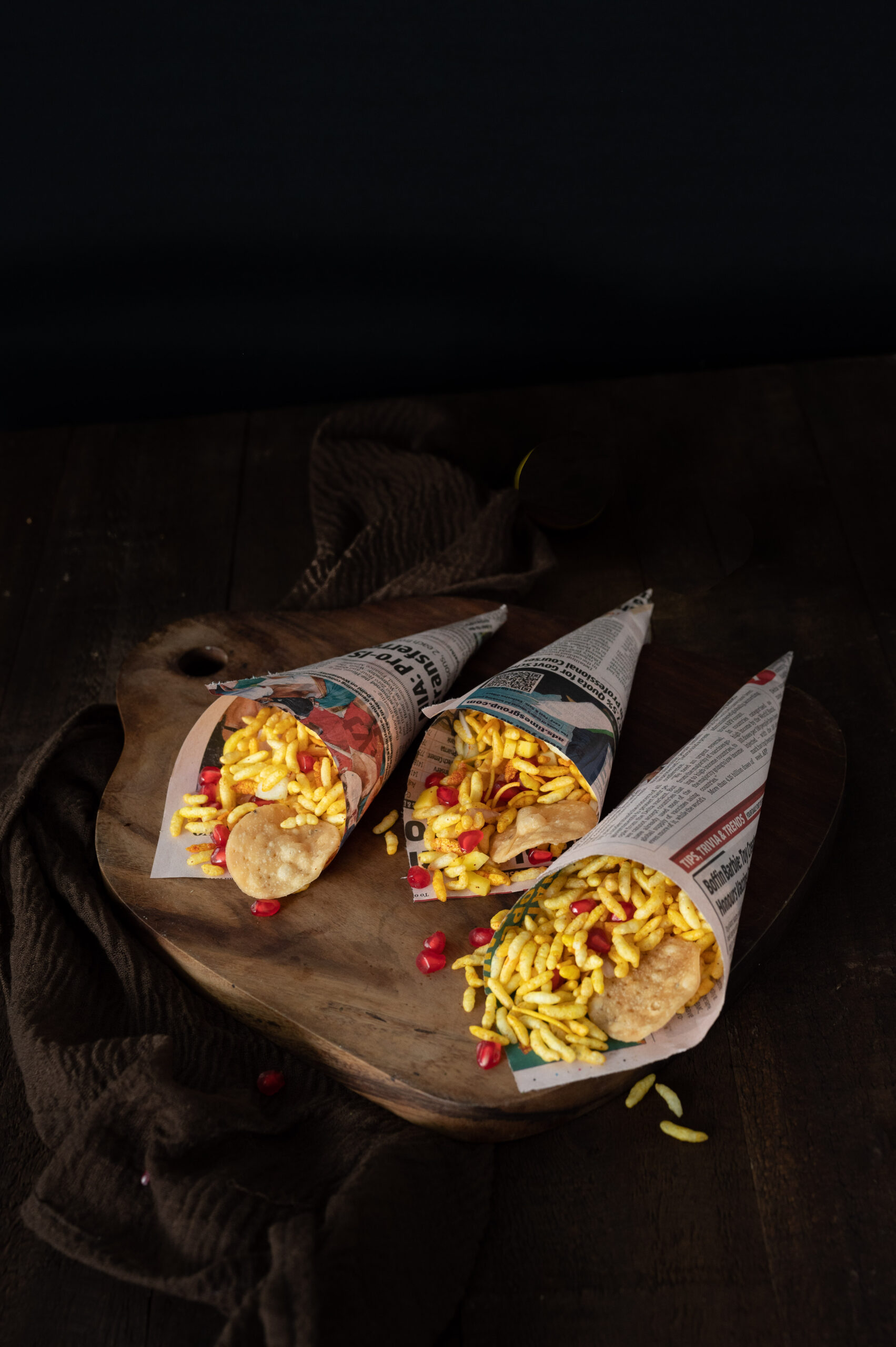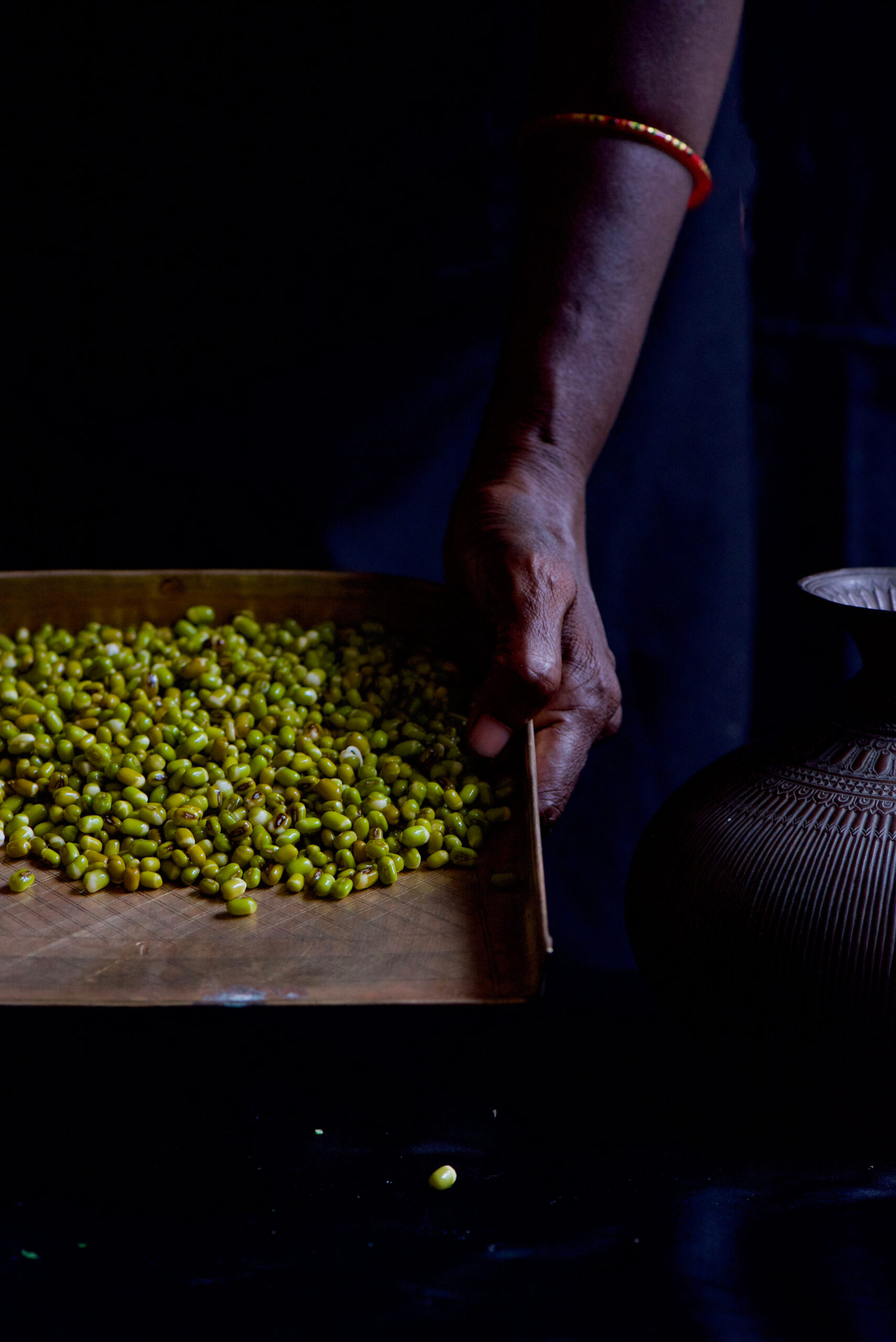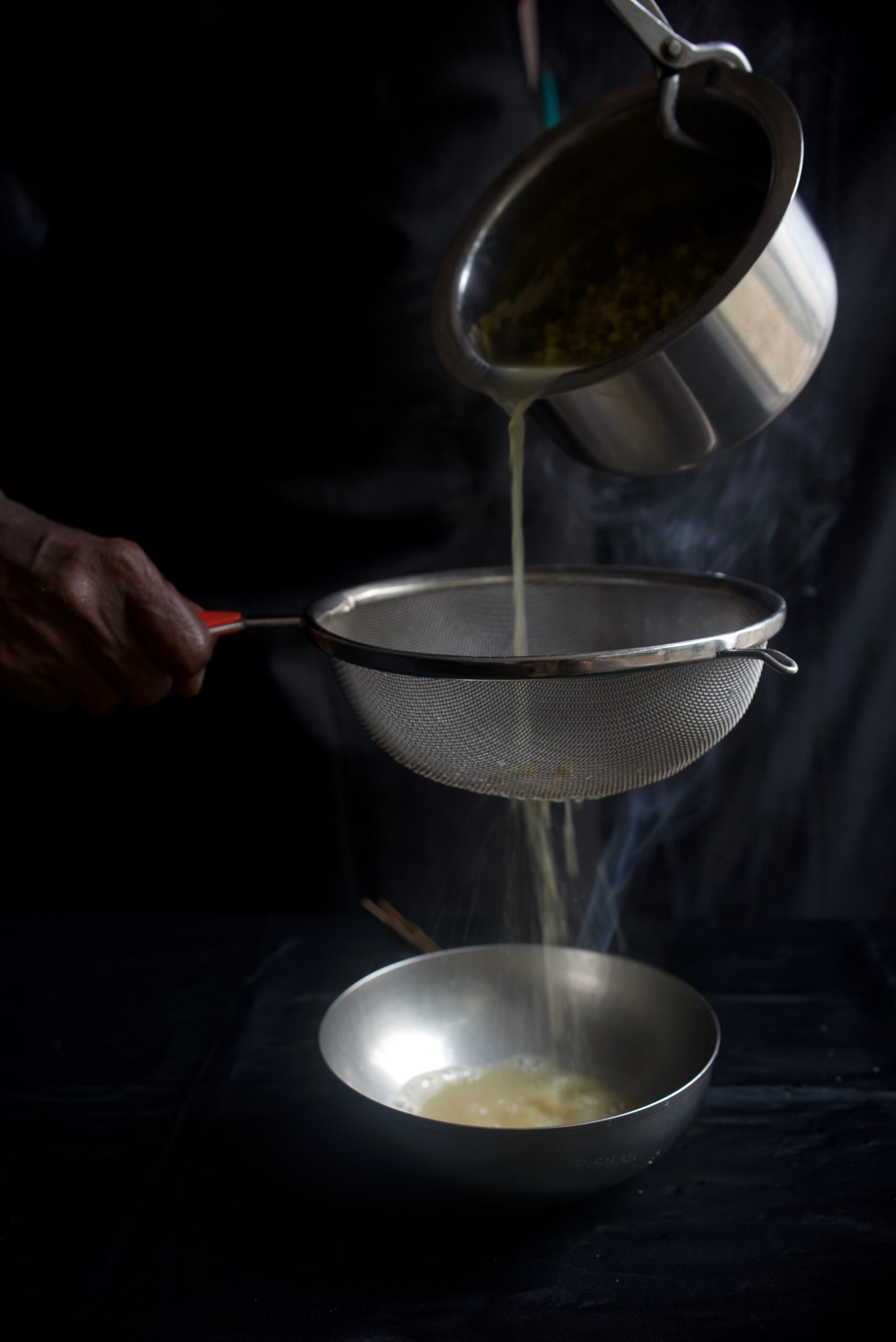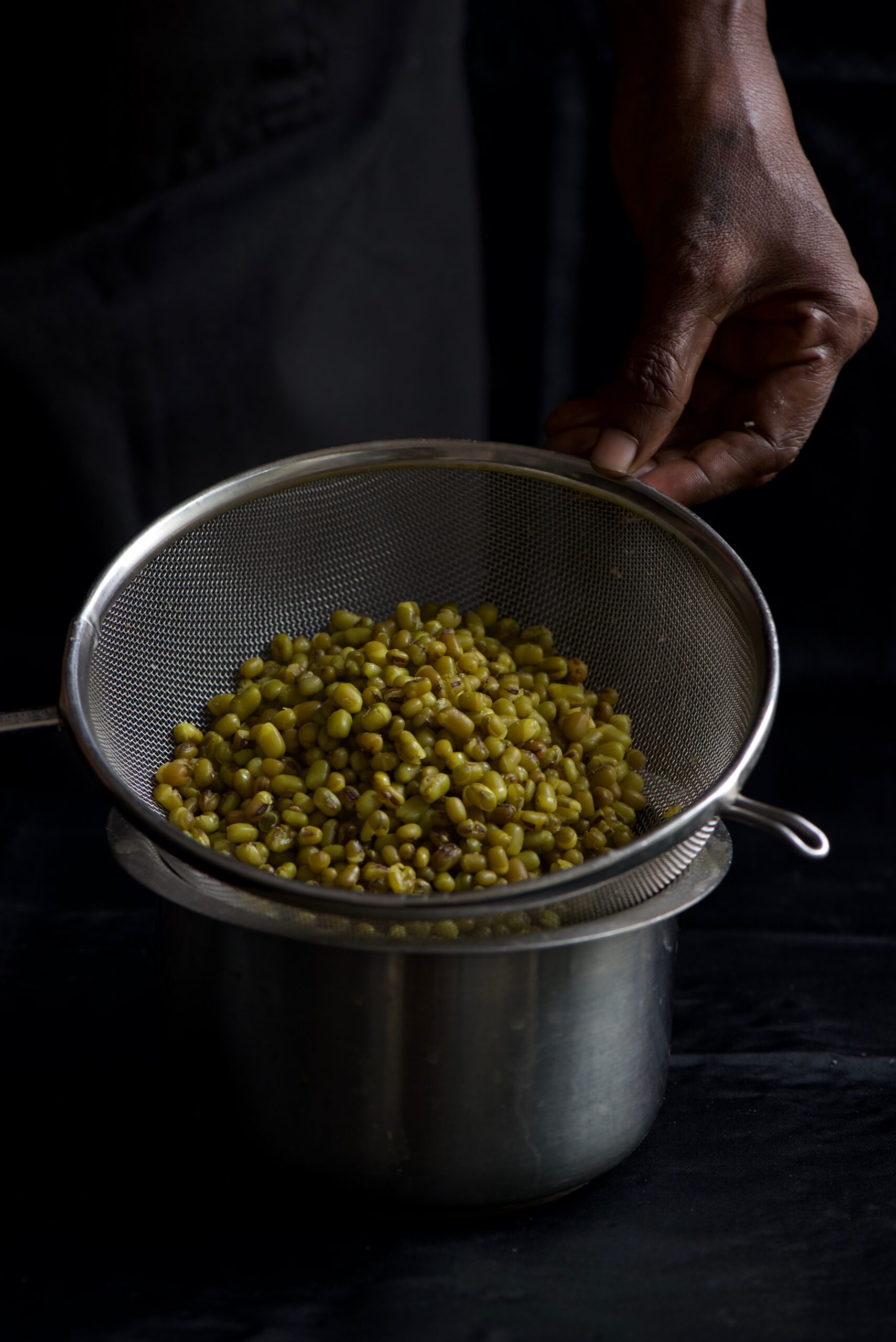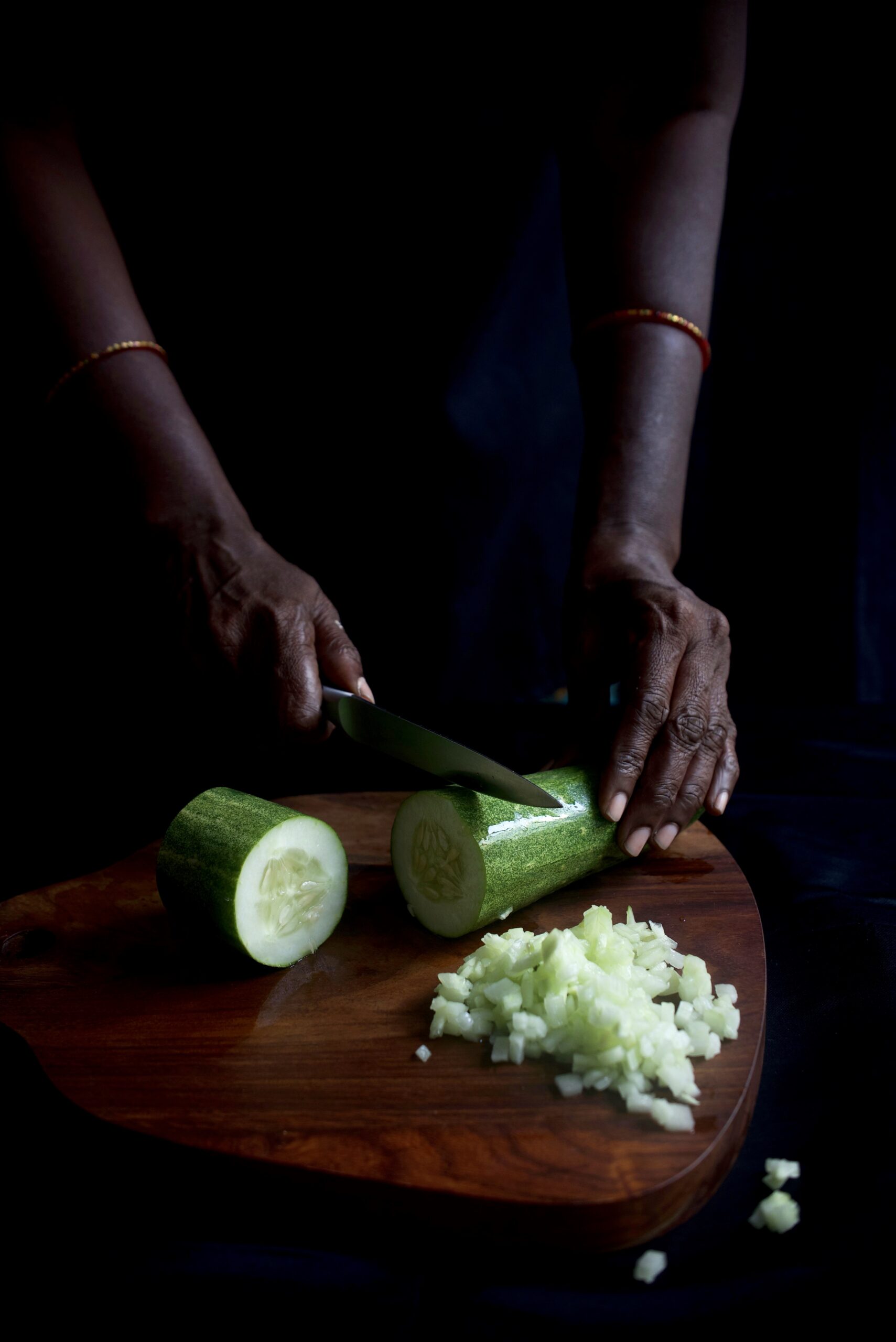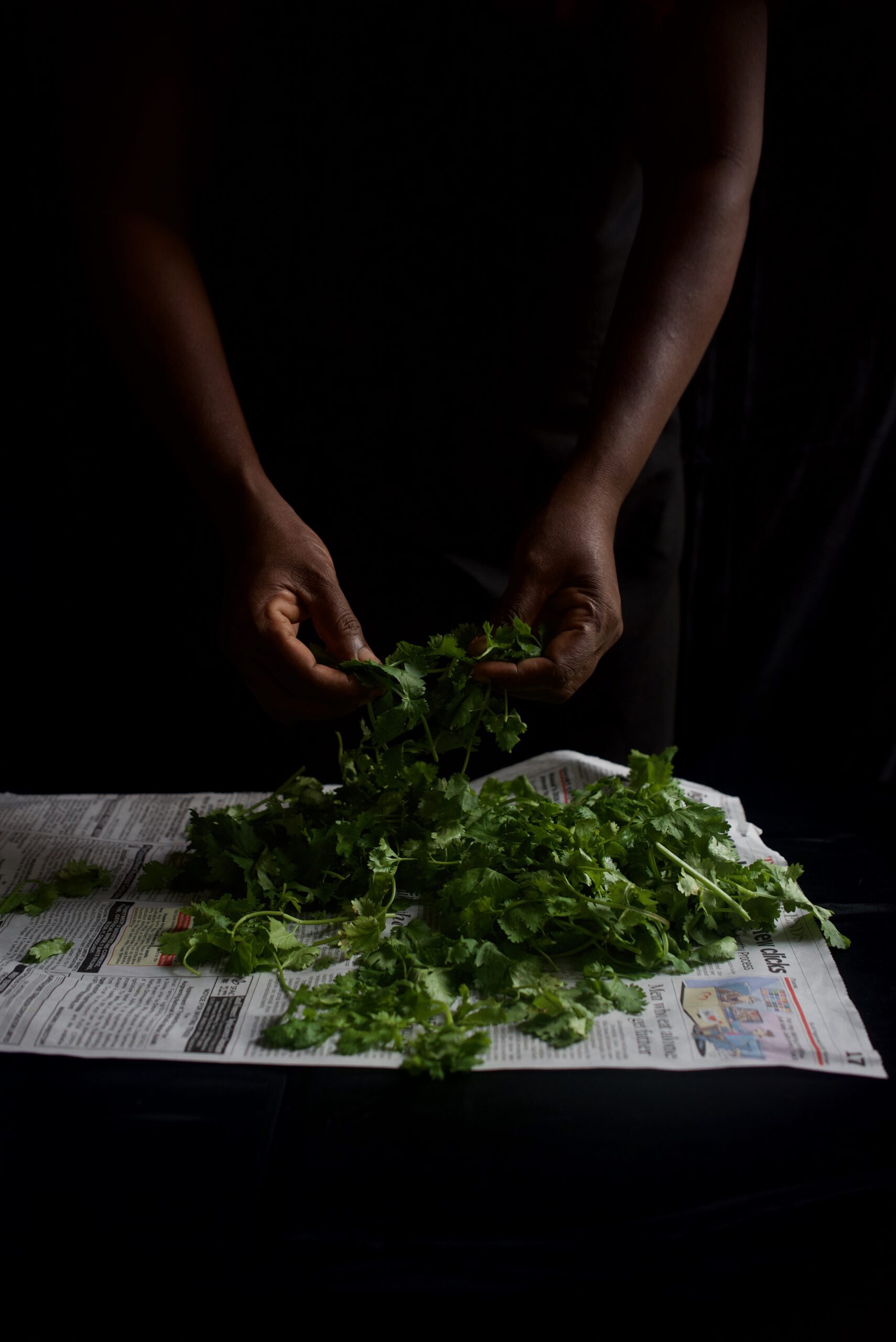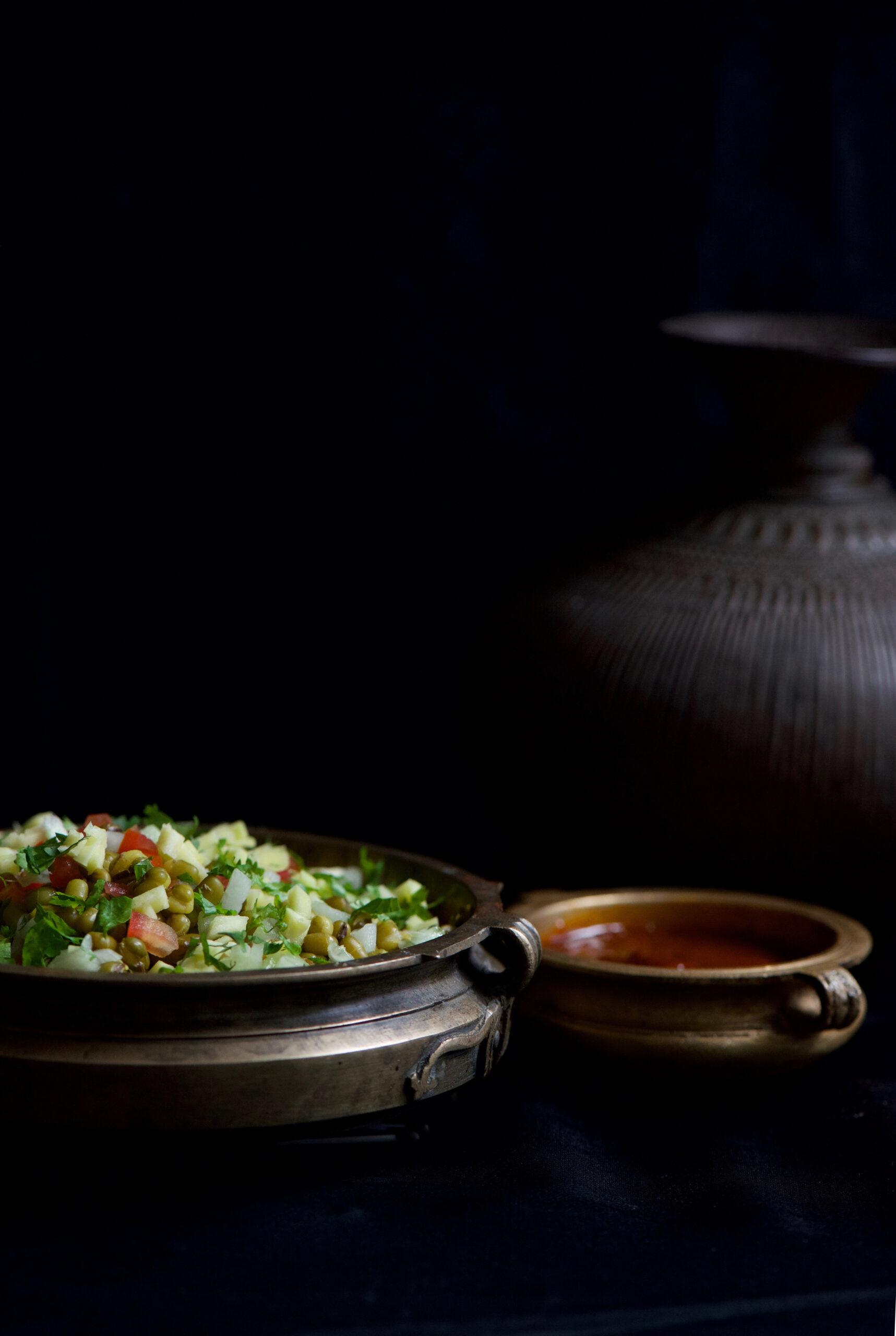Bhel is a popular Indian savoury snack, from the chaat or street food category, that is served dressed up in a number of ways. Sukha bhel, or dry bhel, is a simple way to have it. With a puffed rice base and some flavourings, it makes for a filling dish between meals. Many who enjoy this snack will have their own versions. So this is a sukha bhel, Nandi style. Lately, we have been having it at home with tea daily, so of course I wanted to share the same with you!
My husband has a habit of getting into one dish and becoming obsessed with it for about a year or so, during which he needs to eat it every single day (and then, eventually tiring of it, having had his fill and then some!). His current penchant is for this sukha bhel, and since it’s now a regular at our table, I try to make it as healthy as possible. You can take the nutritious route even with items that are conventionally regarded as unhealthy, such as most street foods. In fact, I have shared a green moong bhel in the past that was even healthier than this one, and I hope you’ll try that out too.
So if by chance you land up at my home between 5pm and 6pm on any given day, you’ll be served a nice helping of this sukha bhel. There will invariably be a tea cake from the re:store kitchen to accompany it, and maybe even the crispy butter cookies you read about last weekend. Of course, this special masala chai will waft its lovely aromas over the table too. Tempting, no? The best part is, whether you can drop by or not, you can prepare the entire tea time feast from scratch yourself. Every recipe I’ve mentioned is right here on this blog, for your own enjoyment.
There have been times when I watched what I eat like a hawk and felt guilty about every little thing that went into my mouth. Slowly, I recognised how unhealthy this habit was, and how it negated the supposed healthiness of trying to stick to any particular diet. So now and then, I say, “To hell with it!” and have a slice of cake with my bhel too. I know it won’t do me any harm, especially if I make adjustments at dinner time with portions and dish choices. Do you do anything similar, to ensure that you don’t miss out on the good stuff but also don’t compromise on sensible dietary choices?
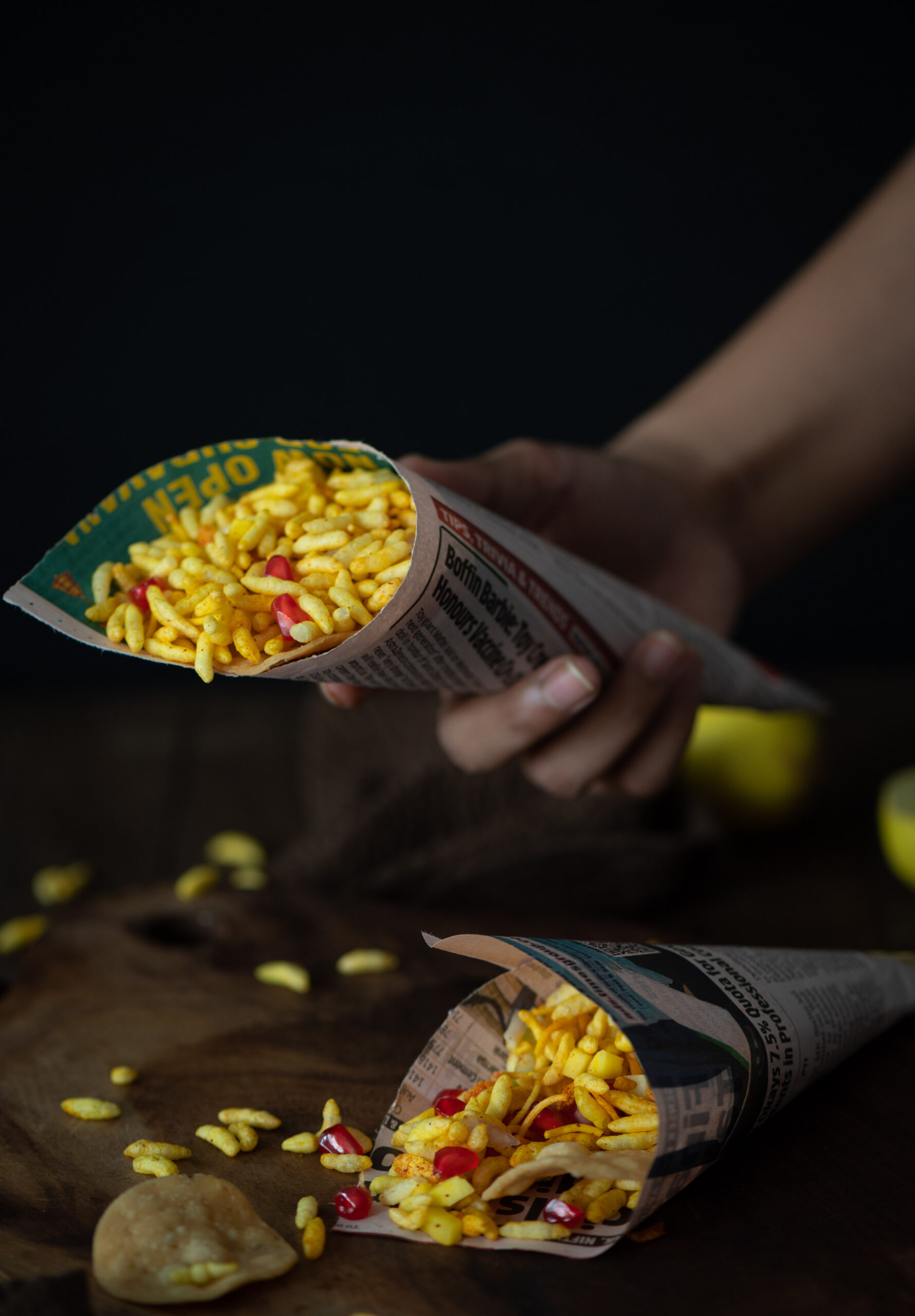
Now, even though my husband craves this sukha bhel daily, I must admit that it is only in the second-best standing for him. The very best is the street-side bhel you find in Bombay, and I will concede that it tops mine. It’s my own favourite too. When I visit the city and am on my way to my sister’s home from the airport, I always stop and pick up an order along the way, and will have finished eating it before I’ve even arrived at her door! Simply wrapped in a piece of newspaper, with a puri in place of a spoon to scoop up the bhel, it really is unbeatable. I relish the very last bite, when I get to eat the “spoon” as well. That’s the best part, and this tantalizing mix of flavours is how every trip to Bombay begins for me.
Since this is a homemade sukha bhel, I load it up with vegetables. I also make a drier version than what you get outside, although the chutneys that give it its deliciousness are still key elements. A sweet chutney, a spicy one and a dash of lemon bring together all the ingredients that are detailed in the recipe below. The chutneys are staples in my refrigerator, and I’ve shared the recipes for both in prior posts as well, as you can see in the links below.
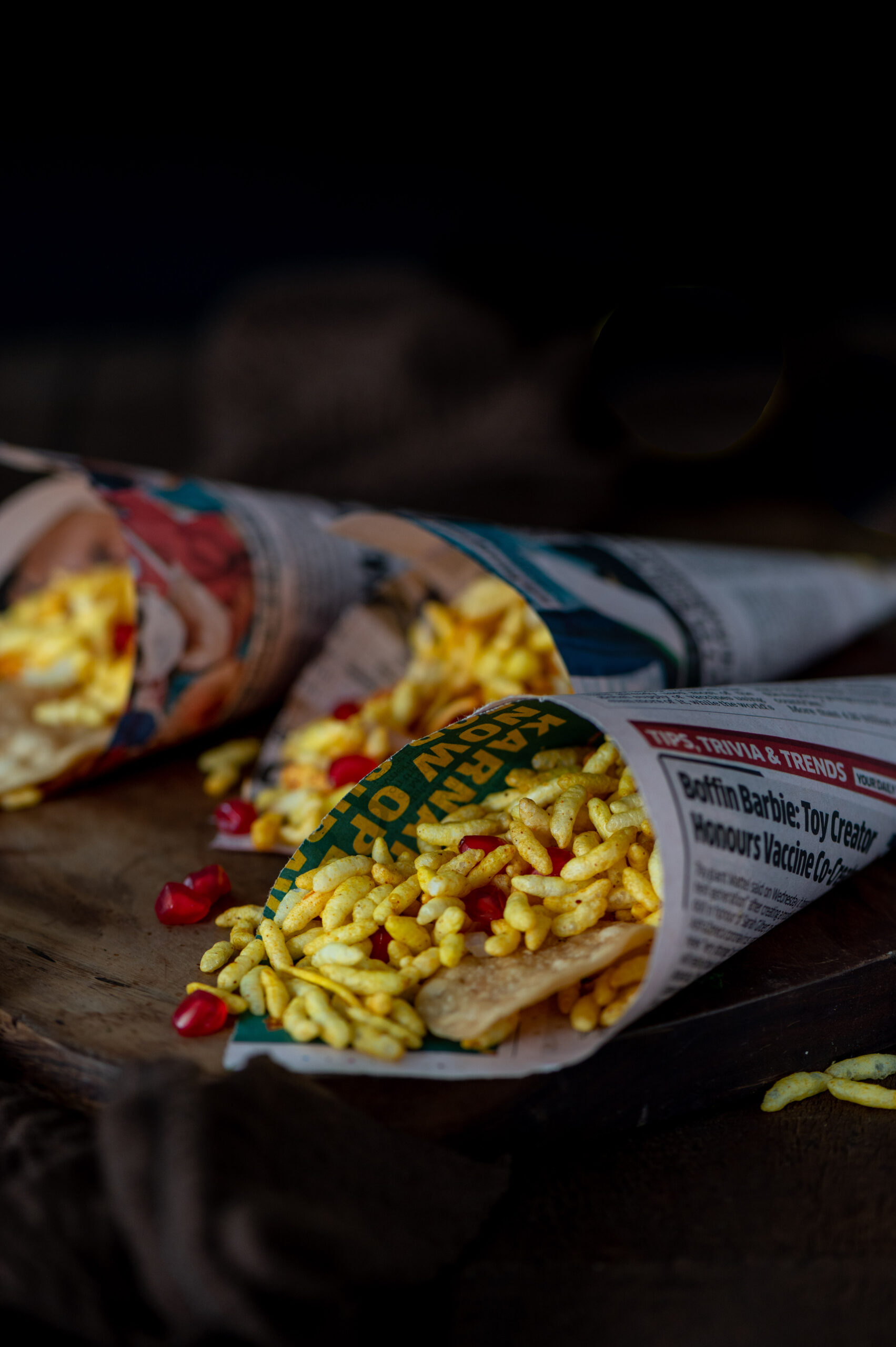
Sukha Bhel
(Serves 2-3)
½ cup chopped cucumber
½ cup chopped boiled potatoes
¼ cup finely chopped onions
¼ cup chopped mango
A squeeze of lemon
1½ cups bhel mix or roasted puffed rice
Black salt to taste
½ teaspoon roasted cumin powder
1 tablespoon tamarind/date chutney
½ teaspoon garlic chutney (optional)
Pomegranate arils for garnishing
Coriander leaves for garnishing
Small crispy puris
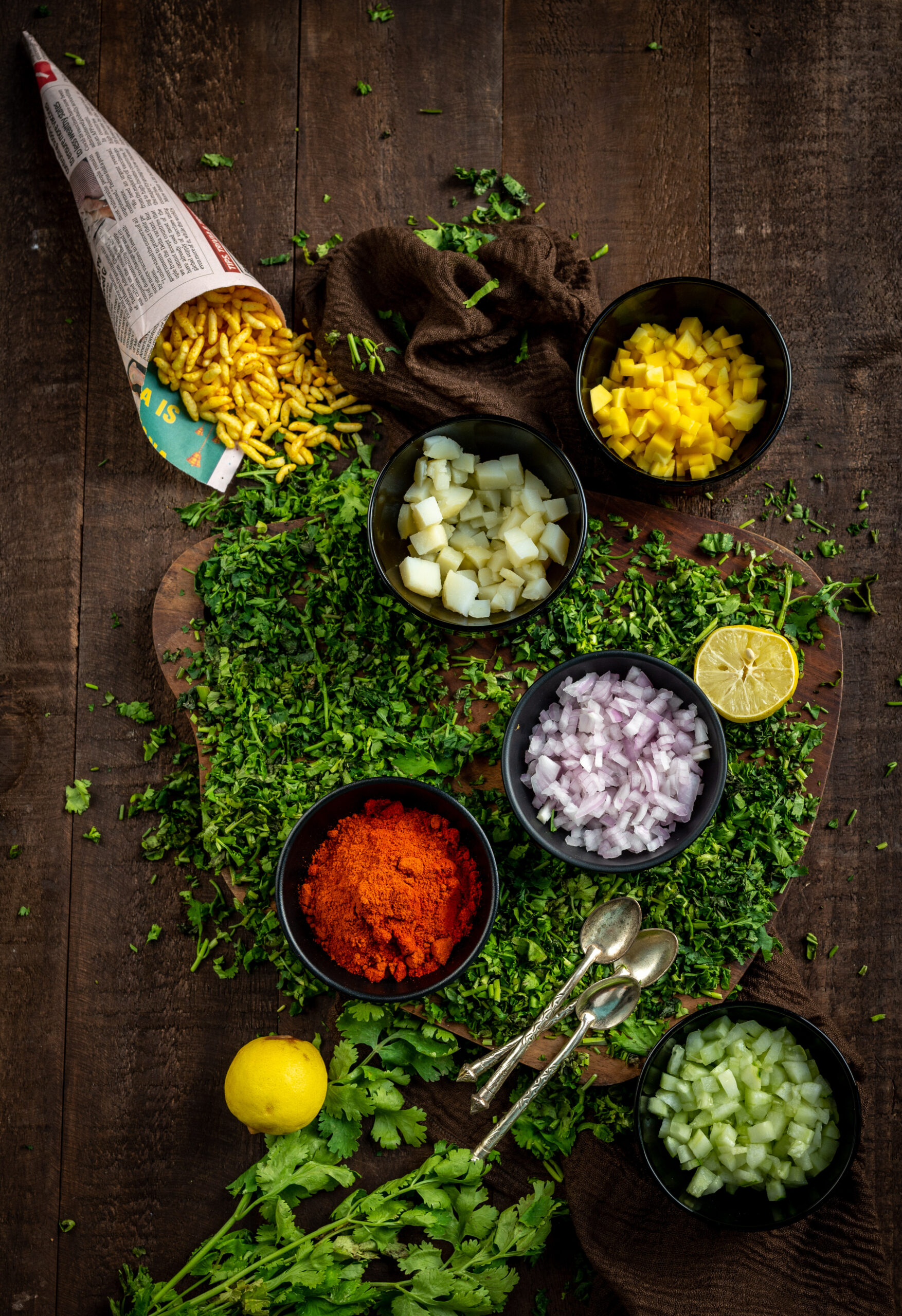

In a bowl, add all the cut vegetables. To this, add cumin powder, black salt, the chutneys and the lemon juice. Mix well.
Finally, add the bhel or puffed rice. Mix again. Garnish and serve immediately, else the bhel will get soggy.
I love to use finely cut raw mango in this sukha bhel for a tang, and this is an ingredient that we get pretty much all year round. I also use boiled potatoes, and decorate the dish with pomegranate arils for a hint of sweetness. Use the same if you wish to, or substitute as preferred. Similarly for the use of onions if you prefer. In lieu of regular salt, I use either black or pink salt, which gives the dish a distinct flavour. Add more bhel or puris for more of a crunch, if you like that. The fun in the preparation is really all about increasing or decreasing quantities, or adding or removing ingredients, based on your personal taste. The bhel and the chutneys are the base – the rest is up to you.
As for my personal taste, as well as my husband’s, this particular recipe is the one that hits the spot. The second-best sukha bhel – and the best outside of Bombay! I hope you’ll find it just as satisfying, and that it will be your own favourite after the Bombay chaatwallas’ too!
